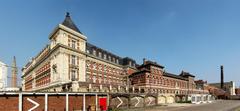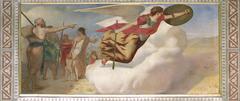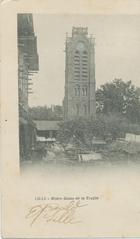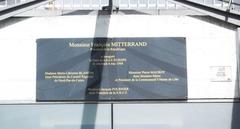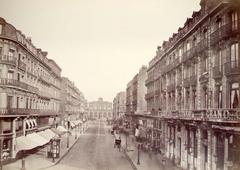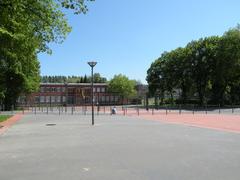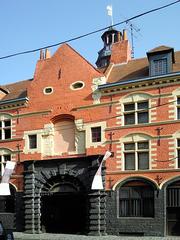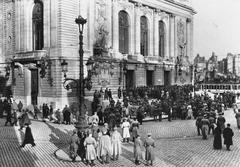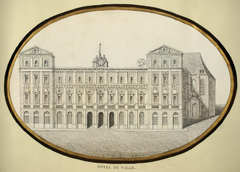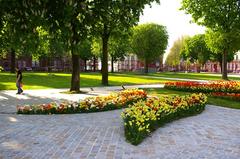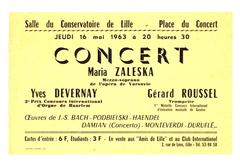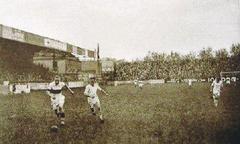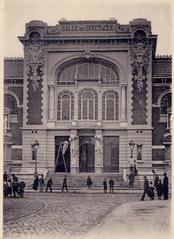
Place du Général-de-Gaulle (Grand Place) Lille: Visiting Hours, Tickets, and Travel Guide
Date: 04/07/2025
Introduction
Place du Général-de-Gaulle, better known as the Grand Place, is the historic and cultural epicenter of Lille, France. With origins stretching to the Middle Ages, this iconic square has evolved from a bustling grain market into a majestic civic plaza, reflecting Lille’s dynamic urban development and enduring spirit. Today, the Grand Place is celebrated for its architectural splendor, vibrant events, and its role as the heartbeat of social life in Lille. This detailed guide provides everything you need for your visit, including historical context, architectural highlights, practical travel information, and insider tips.
(Lille Tourism, Wikipedia, TravelSetu)
Table of Contents
- Medieval Origins and Early Development
- Architectural Evolution and Urban Significance
- Key Monuments and Symbols
- Renaming and Modern Identity
- Cultural Significance and Notable Events
- Visiting Hours and Access
- Accessibility and Travel Tips
- Nearby Attractions and Guided Tours
- Photographic Spots
- FAQ
- Conclusion and Call to Action
- References
Medieval Origins and Early Development
The origins of Place du Général-de-Gaulle date back to the Middle Ages, when Lille was transitioning from marshland to a major commercial hub in northern France. Extensive drainage and canalization projects transformed the area into a vibrant grain market by the 14th century, capitalizing on Lille’s strategic location along European trade routes. The square’s layout and centrality established it as the city’s main gathering point for commerce and civic life. (Lille Tourism, Wikipedia)
Architectural Evolution and Urban Significance
The architectural landscape of the Grand Place is a testament to Lille’s layered history and cross-cultural influences. The 17th-century Vieille Bourse (Old Stock Exchange), a Flemish Renaissance masterpiece, divides the space into the Grand Place and Petite Place (now Place du Théâtre). Surrounding the square are ornate guild houses, the neoclassical Théâtre du Nord (formerly the Grand Garde), and commercial facades in styles ranging from Flemish Renaissance to Art Nouveau. Each building tells a story of Lille’s mercantile and civic legacy, while the square’s checkerboard granite paving, a modern touch, enhances its grandeur and accessibility. (Moments Log, Nomads Travel Guide)
Key Monuments and Symbols
At the heart of the square stands the Column of the Goddess (Colonne de la Déesse), erected in 1845 to honor the resilience of Lille’s citizens during the 1792 Austrian siege. The statue of the Goddess, holding a linstock, serves as a powerful symbol of local pride and resistance. The façades of surrounding buildings, such as the Voix du Nord, feature allegorical female figures representing the provinces of Artois, Flanders, and Hainaut, underlining Lille’s identity as a crossroads of cultures. Nearby, the Furet du Nord, one of Europe’s largest bookstores, and the Hôtel de Ville add further architectural interest. (Wikipedia, Explorial)
Renaming and Modern Identity
In 1944, the square was officially renamed Place du Général-de-Gaulle to honor Charles de Gaulle, the leader of the Free French Forces, who was born in Lille. Despite the new name, locals continue to affectionately refer to it as the Grand Place or Place de la Déesse, reflecting its deep-rooted civic and cultural significance. (Lille Tourism)
Cultural Significance and Notable Events
The Grand Place is the stage for Lille’s most important public events, including the Braderie de Lille, Europe’s largest annual flea market, held every September and attracting millions of visitors. The square also hosts a weekly flower market, lively Christmas markets, concerts, and open-air festivals throughout the year. Its role as a site for public gatherings and celebrations affirms its status as Lille’s communal living room. (france.fr, Explorial)
Visiting Hours and Access
- Square Access: Place du Général-de-Gaulle is an open public square, accessible 24/7 with no entrance fee.
- Vieille Bourse: Open daily from 10:00 AM to 6:00 PM (free courtyard entry; special events may require tickets).
- Théâtre du Nord: Hours and tickets vary by event; check the official website.
- Palais des Beaux-Arts: Tuesday–Sunday, 10:00 AM–6:00 PM; free on the first Sunday of each month.
(Dreaming in French, TravelSetu)
Accessibility and Travel Tips
- Mobility: The square is pedestrianized and wheelchair accessible; however, some adjacent cobblestone streets may be uneven.
- Transport: The Rihour metro station (lines 1 and 2) is the nearest stop. Lille-Europe and Lille-Flandres train stations are within a 10-minute walk. Buses, trams, and bike rentals are widely available.
- Parking: Underground parking is available nearby (342 spaces at Grand Place).
- City Pass: The Lille City Pass covers public transport and entry to multiple attractions.
(The World Was Here First, Nomads Travel Guide)
Nearby Attractions and Guided Tours
- Vieille Bourse: Book markets, chess games, and architectural details.
- Palais des Beaux-Arts: Major art museum with works by Rubens and Delacroix.
- Hospice Comtesse Museum: Medieval heritage of Lille.
- Lille Cathedral (Notre-Dame de la Treille): Neo-Gothic and modern architecture.
- Guided Tours: Walking tours are offered by local providers and can be booked in advance, especially during peak events.
Photographic Spots
- Ornate Flemish facades and checkerboard paving.
- The Column of the Goddess, especially at sunrise or sunset.
- Panoramic night views when the square is illuminated.
- Vieille Bourse courtyard during the book market.
FAQ
What are the visiting hours of Place du Général-de-Gaulle?
The square is open 24/7. Nearby monuments follow their own schedules.
Is there an entrance fee?
No, the square is free to visit; some attractions may charge admission.
Are guided tours available?
Yes, several providers offer historical and architectural tours.
Is the area accessible for people with disabilities?
Yes, the square is largely wheelchair accessible.
When is the best time to visit?
During the Braderie de Lille in September or the winter holiday season for markets and festivities.
Conclusion and Call to Action
Place du Général-de-Gaulle is the vibrant heart of Lille—a square where past and present, architecture and culture, locals and travelers converge. Open year-round and free to visit, it offers rich experiences, from major events like the Braderie to daily markets and spontaneous gatherings. Whether you’re an architecture lover, culture seeker, or casual visitor, the Grand Place is a must-see destination.
Plan your visit today! Enhance your experience with the Audiala app for guided tours, itineraries, and the latest event updates. Explore more of Lille’s hidden gems on our website, and follow us on social media for inspiration and practical tips.
References
- Lille Tourism
- Wikipedia
- lille.fr
- france.fr
- Nomads Travel Guide
- Moments Log
- Dreaming in French
- The World Was Here First
- TravelSetu
- Explorial














